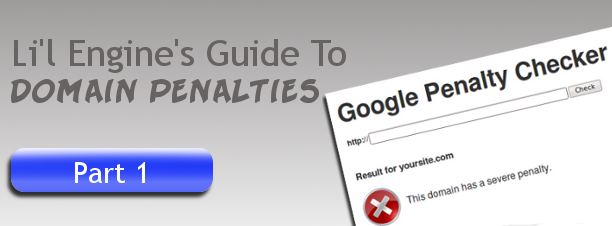
Has your website’s search engine ranking dropped drastically for no apparent reason? It is possible that your site has been hit by a domain level penalty from Google’s web spam team. A domain level penalty means your whole site has been demoted drastically in the search engine rankings – not just certain pages of it. The bad news is this can be difficult to pin down. While there are tools to help you figure out if your site has been penalized, there is a degree of speculation about it.
When your site’s Google search engine ranking takes a hit suddenly, then you can pretty easily conclude that you have done something wrong in the opinion of Google. They’re not all that specific about what happens when they “catch” you doing something wrong, and exactly how they penalize you. But in general, there are a few categories into which these mistakes fall, and there are ways to make a reasonable conclusion about which sin you’ve committed.
Cataloging the various Google penalties people have come across is like trying to herd cats. Whatever relationship exists between the punishment and the crime either isn’t transparent, or is not handled evenly across the board. Being banned is, of course, as bad as it gets, since your site is suddenly not able to be found. This usually only happens when some kind of serious deception is going on on the site. But there are a few activities that have been pinned down as sending the Google gods into a frenzy.
Domain level redundancy is one thing that can get you penalized. This is what happens when webmasters clone sites. In other words, they point the Domain Name System (DNS) from several domains into the same directory. This makes each domain display exactly the same site.
If you duplicate the same content over several pages or sites, or if someone copies your site or content, Google will ding you for content redundancy. If you think someone else is ripping off your content, check Copyscape and see if you can track it down.
Purchasing a number of domains, each of which address separate keyword targets is now considered punishable.
If Google thinks you’re a link seller, your links will rapidly mean zilch. If your links do not pass on PageRank juice, they’re worth less than the pixels they’re written on, even if you are using them on your own site.
There is a certain amount of mystery surrounding the Google “sandbox” theory. Some people believe that young sites are penalized. You don’t see this penalty unless you try to SEO the heck out of it within the first few months of the site’s existence. Apparently there is a certain amount of dues paying your site has to do before your SEO starts getting respect from the big guys.
Does your site support (or appear to support) porn, gambling, or “male enhancement” sites? Well, duh. Of course you’re going to get penalized. Same with spam.
If your site may be perceived as a threat to national security, like if you sell fake IDs or something, your site will be penalized. If a third party hijacks your search engine rankings by means of cloaking and proxy, unfortunately, your site gets hit with a penalty. This one is mostly Google’s fault. The same is true if an affiliate uses content from your site, or if your competitor intentionally links to you from “bad neighborhood” (porn, gambling, etc.) sites.
And, of course, there’s the fact that the Google algorithm isn’t perfect. Algorithm quirks can have the same effect as a penalty if it makes your site unreachable.
If you want to find out if your site has been penalized, we have a free penalty checker tool you can use if you go to http://tools.lilengine.com/penaltychecker/. Click the button below to give it a try.
You just input the address of the site you want to check out, and you’ll get a result either like screen shot one (when a site does appear to have been banned or penalized) or screen shot two (when a site is not believed to have been penalized).
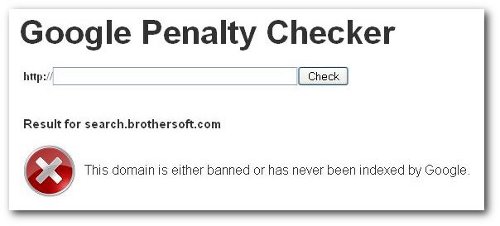
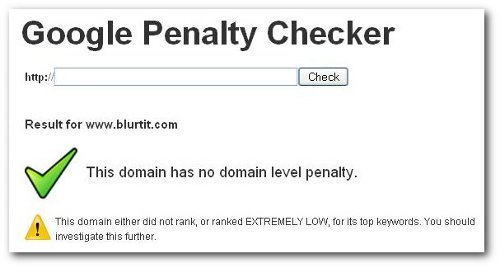
If you suspect your site has been penalized, there are a number of steps you can take to find out if it has, and why. Once you fix the problems, you can request re-instatement by the Google search engine and eventually get back in its good graces.
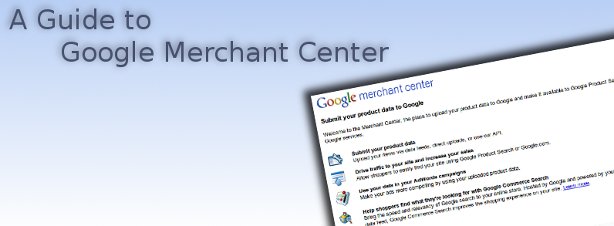
Google Merchant Center is for those who want to submit products and sell them through Google. It used to be called Google Base. Google Merchant Center is where you upload feeds, check item status, and get information about how well your listings are doing. Your products uploaded to Google Merchant Center feed the searches that other people do for products they want to buy. For example, suppose someone wants to buy some dog toys. Starting at Google’s home page and clicking on “Shopping,” they’ll see a page like in the first screen shot. After typing “dog toys” into the search box and hitting enter they’ll be taken to a listings page like the one in the second screen shot.
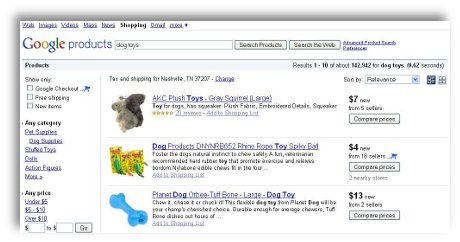
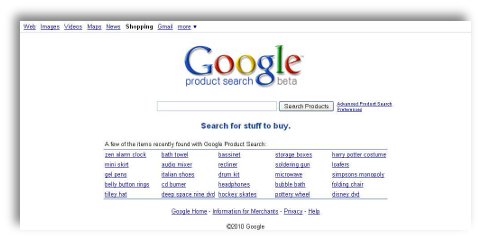
Google Base still exists, but Google Merchant Center is optimized for product listings, and it is where Google will concentrate on adding features and improving the tools needed for uploading product listings and managing them. If you already used Google Base for listing products, your existing data feeds, FTP settings, and other items will still be there. Your account will have already been transferred to the Google Merchant Center, and you will sign in using the same account you used on Google Base. For most users the transfer will be transparent. There are, however, a small fraction of users who have been uploading product listings and other items on Google Base. They will need to sign on to Google Base to create new FTP settings to be able to upload non-product feeds to Google Base.
 Google Merchant Center has a new dashboard page that contains an overview of your product listings, and feeds, and performance graphs, making them more accessible than before. There is now a blog you can visit, googlemerchantblog.blogspot.com for news and tips for using Google Merchant Center effectively.
Google Merchant Center has a new dashboard page that contains an overview of your product listings, and feeds, and performance graphs, making them more accessible than before. There is now a blog you can visit, googlemerchantblog.blogspot.com for news and tips for using Google Merchant Center effectively.
If you sell items over Google Merchant Center, the Google Checkout is the secure web application that lets you process orders, which includes tasks like charging credit cards, specifying carriers and tracking numbers, canceling or refunding orders, reviewing payout summaries, and updating Google Checkout settings.
To process orders in the Google Merchant Center, you sign in, review the order, and charge the buyer’s credit card. Google will then authorize 100% of the order amount. You are required to charge the order within seven calendar days to be guaranteed the funds. After the order is charged, you automatically initiate the payout process. You have to ship the order within a specified time frame that you agreed to when you confirmed an order so that you will be eligible for the Google Checkout Payment Guarantee. You’ll notify the buyer that their order has shipped. There are ways of automating order processing using the Google Checkout API.
If you sell services or goods that don’t need to be physically shipped, you have to mark the order “shipped” in order to send the buyer a confirmation email. Some transactions involving digital goods might not be covered under the Google Checkout Payment Guarantee policy.
In processing orders, Google uses automatic fraud risk modeling to alert them to possible fraudulent transactions. If a fraudulent transaction is detected, it is immediately cancelled. In order to protect you and other Google Merchants, active orders from the same fraudulent credit card will be cancelled. Google Merchant also uses industry sources like worldwide fraud blacklists to block fraudulent shoppers from using Google Checkout in the first place.
For example, if Google detects suspicious activity related to one of your orders, it will flag the order with “customer review in progress” status and will perform fraud detection tests on the order to keep your risk as low as possible. Google usually completes their reviews in four to six hours.
You, as a Google Merchant, are able to review credit verification information on each order you receive. You just sign in to Google Checkout, click the order in which you are interested in your “orders” box. At that time buyer credit verification information appears below the buyer’s shipping information, including whether the transaction is covered by the Payment Guarantee, the Address Verification System check, the Card Verification Value, or CVV, and Account age shows how long the buyer has been qualified to buy through Google Checkout. If you are concerned about an order, you do have the option to cancel it to avoid the risk of a fraudulent transaction.
Fees for Google Merchants vary by the dollar amount of monthly sales and are reset every month on the 5th. For monthly sales under $3,000, the fee is 2.9% + 30 cents / transaction. For sales between $3,000 and $9,999.99, the fee is 2.5% + 30 cents / transaction. For $10,000 to $99,999.99 per month, the fee is 2.2% + 30 cents / transaction, and for sales over $100,000 per month, the fees are 1.9% + 30 cents / transaction. Orders that ship to buyers in a country different from the Merchant’s country will also have an additional 1% processing fee.
If you plan to sell apps in the Android phone market, your transaction fee is 30% of the application price. In other words, if you sell your app for $10.00, your transaction fee is $3.00 and your payment will be $7.00.
Google Merchant Center is an answer to those who want to sell products through Google Products searches. This can be a real sales booster for those who have shops online at places like Etsy. Google Merchant Center is now split apart from Google Base, with the goal of making online product searches more fruitful and online sales easier for merchants and shoppers.

Statistics from early 2009 claimed that iPhone users accounted for some two-thirds of all mobile browsers. Now, while that particular statistic has been questioned and debated, there is little doubt about the effect of the iPhone on mobile browsing. The advent of the Google Android phone will only make mobile web surfing more mainstream than it already is. When it comes to optimizing your web content for Google Mobile Search, there are a number of things you can do.
Some people say that you should make a mobile version of your regular website, while other say that you should optimize your existing site for mobile browsing. But whether it’s your normal site optimized for mobile, or a new mobile version of your site, there are steps that anyone wanting to rank high in mobile search results should do.
 Step one is to make sure that your website is mobile compliant. This means that your pages are formatted for people browsing the web with their phones. Mobile browsing implies a lack of time to complete a search. Perhaps instead of mobile “browsing,” the term should be something more like mobile “hunting.” But since mobile users are also short on screen space, the pages should be designed to cater to this reality. Do you know what your site looks like on a mobile web platform? If not, do a mobile search to see. You’ll notice that a lot of your site’s goodies are unavailable. But this makes some choices all the more obvious.
Step one is to make sure that your website is mobile compliant. This means that your pages are formatted for people browsing the web with their phones. Mobile browsing implies a lack of time to complete a search. Perhaps instead of mobile “browsing,” the term should be something more like mobile “hunting.” But since mobile users are also short on screen space, the pages should be designed to cater to this reality. Do you know what your site looks like on a mobile web platform? If not, do a mobile search to see. You’ll notice that a lot of your site’s goodies are unavailable. But this makes some choices all the more obvious.
If these things don’t check out, then you need to make some changes to get your site ready for what many experts see as the coming tsunami of mobile searching.
Why should you go to the trouble? The current industries seeing the most growth in mobile searches are business, entertainment, and travel. According to the Mobile Optimization Association, mobile searchers tend to be young, high income professionals with promising careers, or, to put it more bluntly, people with more disposable income than usual.
Web pages for mobile browsing are created in XHTML or WML. They must be W3C compliant. W3C stands for “World Wide Web Consortium” and sets guidelines about how a web page should be structured. They publish best practice design principles for webmasters. Without going into the nuts and bolts of getting your site to be W3C compliant, you should know that there is a W3C Code Validator at http://validator.w3.org/ that anyone can use to ensure that your site renders on all the major browsers and platforms in a similar manner.
Before deciding exactly how to optimize your site for mobile, there are a few things to know about the people who use mobile browsers. First of all, they tend to use the same search engine on their mobile device as they use on their PC. Even though there are 234 million wireless subscribers in the U.S., only 10% use mobile search (which is still 23 million people). Adoption rates of mobile browsing are much higher in Europe. Finally, mobile searchers are goal-oriented: they want to get the info and get out. They don’t tend to browse or surf.
A few general practices for optimizing your site are:
There are two main opinions when it comes to optimizing your site for Google Mobile: 1) Optimize your existing site; and 2) Create a new mobile-only site. Both approaches have their advantages and disadvantages, which we’ll go into next.
If you want to optimize your existing site, make sure that in mobile search your pages are independent of device. Search results on mobile devices use a different data set than web browsers do.
Use external CSS style sheets because they limit how much code has to be downloaded and are helpful in scaling up or down for different screen sizes. You can have a separate style sheet for hand held devices.
Use text links rather than images. Images may not download at all and will increase page loading times. Here are a few do’s and don’ts for optimizing an existing site for mobile search.
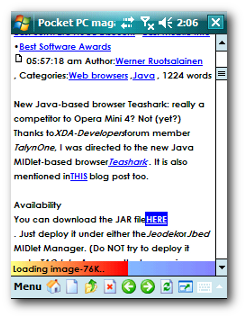
The argument for doing this is that mobile users are goal oriented rather than simply browsing. Some sites have taken to using a subdomain approach rather than using a separate domain like .mobi. That would give your mobile site a name like mobile.yourdomainname.com. It allows you to retain the “brand” of the top level domain rather than having to rebuild branding for a new domain name. Here are some tips for optimizing a mobile-only version of your site.
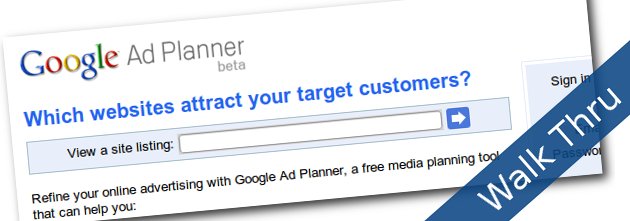
Online marketers and media planners know that there are a lot of challenges involved with creating a web advertising campaign and making sure that your adds are placed on relevant websites. It is important that you scale your ad campaign’s reach and keep it relevant to your target audience. You know there must be millions of sites out there that are prefect for your campaign, but how do you find them?
Google Ad Planner lets you research and locate websites with target audiences closely matching your ad target audience. This gives you two advantages: you will get a higher response rate for your ad campaign, and you’ll waste fewer marketing dollars on ads placed on irrelevant websites. Before going into detail about how to use Google Ad Planner, let’s review what a media plan is. To put it very briefly media plan is used to choose the ideal combination of media, reach, and budget for targeting ad placement.
 Google Ad Planner hooks up advertisers and publishers. To use Google Ad Planner, you enter demographics and sites that are associated with your target audience, and you’ll get back information about sites your audience is likely to visit. Those sites don’t have to be part of the Google content network. If you want, you can obtain more details on demographics and related searches for a given site, or you can add a number of sites to your media plan and get aggregate statistics for those sites you’ve chosen.
Google Ad Planner hooks up advertisers and publishers. To use Google Ad Planner, you enter demographics and sites that are associated with your target audience, and you’ll get back information about sites your audience is likely to visit. Those sites don’t have to be part of the Google content network. If you want, you can obtain more details on demographics and related searches for a given site, or you can add a number of sites to your media plan and get aggregate statistics for those sites you’ve chosen.
All this is very useful information for search engine optimization (SEO) as well. Once you find out demographics and related searches for a site, you have a better idea of what keywords are landing certain sites at the top of the search engine results. All you have to do is plug in the information you learn about related searches for a site, and then see which sites end up on top. That gives your site designers and content writers valuable information they need to help bring your site up to the top of the search engine results.
You can also use Google’s keyword tool to search top websites for keyword ideas. For example, the site hgtv.com ranks at the top of a search on “home improvement ideas.” By plugging the site’s address into Google’s keyword tool, you can get back a list of keywords based on information on that site, as you can see in the screen shots.
Google AdWords can also help you decide which keywords to concentrate on, and which ones probably aren’t worth your while. As soon as you put a keyword into AdWords, it gets a Quality Score based on that keyword’s performance for other advertisers. This first Quality Score is your keyword’s “base score.” If your keyword performance is better than this baseline, your Quality Score will go up. But if your keyword has a lower click through rate, your Quality Score will go down. A Quality Score of 9 or 10 indicates a very successful keyword for other advertisers, so you want to give these keywords more attention in using them in ad groups.
Google Ad Planner now includes Google Trends for Websites, a resource designed for media planners. With Google Ad Planner you can create media plans and export them to .csv files (openable in many spreadsheet apps). You also have the option of exporting to DoubleClick’s MediaVisor, an app that lets you manage your other media campaign and buying activities.
1. Look at your website analytics software (which might be Google Analytics or something else), conduct surveys, or research your competitors to learn your website’s target audience by age, education, gender, geography, income, and any other demographic markers you choose.
2. Sign up for Google Ad Planer if you have not done so.
3. Login to your Ad Planner account, and with the information gleaned from Step 1 on the type of person you want to target in mind, identify websites that are good fits and add them to your plan. You do this by clicking the “Ad to Plan” button.
4. Once you’ve chosen the sites you are interested in, you can export the data to your media planner app or spreadsheet so that you can contact publishers for advertising information.
You should keep in mind that Ad Planner is only for research and planning, the statistics they provide are estimates, and that you can’t use Ad Planner to buy advertising.
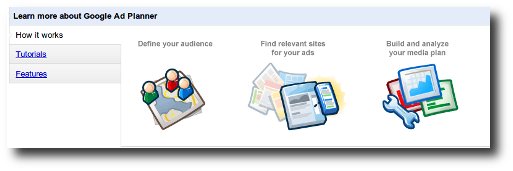
Here are a few more basic facts about the current version of Google Ad Planner. Its data comes from Google Search, Google Analytics, Feedburner, Adsense, Adwords, iGoogle, Toolbar, Maps, Blogger, Gmail, and Orkut. Some analysts believe that the data that is purchased by Google’s competitors may be more accurate than the stats that Google collects from its sources. Google’s data is estimated based on automated analysis of millions of queries and site visits and contains data from a 30-day window. Sites included in Ad Planner have to meet minimum threshold traffic criteria and other guidelines. Right now, Ad Planner is only available in English
Other tools you might be interested in include Google Trends for Websites (google.com/trends). This is what might be called a “lite” version of Ad Planner that can be used to help you plan your focus in Ad Planner. While it’s made for non-advertising users, it contains accessible demographic data in a less detailed form than Ad Planner.
Recent upgrades to Google Ad Planner can give users a more specific view of where to find their target audience. For example, subdomain data is now available and helps media planners refine their plans with statistics about specific pates on a site. You can search for subdomains, find out the top subdomains based on total domain traffic, and ad subdomains to your media plan.
Another recent upgrade is information about ad placements. This lets the advertiser know what sections of a website are selected for advertising (such as right hand column, under heading, etc.) This information is available for sites in the Google Content Network, and is available for some sites outside the network that use Google Ad Manager. You also get an interactive graph that lets you see which sites in your media plan give the best relevance and reach. Sites with the most reach are shown in the top left quadrant. Sites in the top right quadrant have the best combination of reach and relevance. This graph can be further customized.
Another useful development is that site owners and publishers can use Google Ad Planner to share more Google Analytics data points like page views, total visits, average time on site, etc. This gives media planners a better picture of how the demographics apply to specific sites so you can make better decisions about which sites to include in your media plan.
From the point of view of the publisher or site owner, this is a great development because it allows sites to be indirectly “pitched” based on the reader demographics. The Publisher Center lets site owners and publishers showcase their sites to advertisers. Publishers can now claim subdomains to give advertisers a more in-depth view of their sites for media planning purposes. Site owners can now share page views, unique visitors, average visits per visitor, and average time on-site. Publishers can now display badges for advertisers to click on. Advertisers can click on a badge to go directly to a publisher’s Google Ad Planner site profile, where there is a wealth of traffic and demographic data available.
Overall, the reviews of Google Ad Planner are good. The service is fast, free, and uses detailed filters. It doesn’t, however, filter results well sometimes, and will offer up sites that are not good fits and would probably not be top choices for specific advertisers. However, site targeting for media planning is young compared to data on television, newspaper, and other media. Google hopes to score another win for free information by bringing together advertisers and publishers in such a way that both sides benefit.
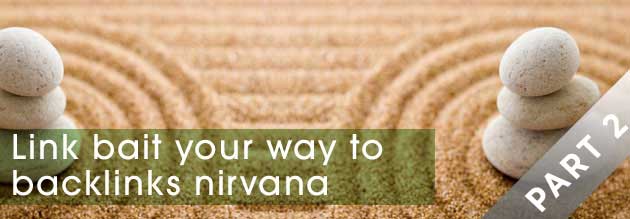
In part one of this post series – introduction to the linkbait concept, I explained the concept of link bait was a derivative of Viral marketing. While link bait campaigns aren’t as resource intensive as viral campaigns; they do still require a creative process of planning, creation and distribution. In part two of link bait your way to backlinks nirvana, we are going to explore the various elements that make up the framework to a great link bait. Each element is an important factor that contributes to the success or failure of your linkbait piece.

Link bait content should be hosted on the website you are trying to optimize for, often on a page of its own or a company blog. This is one of the key differences between viral content versus link bait content, by hosting the link bait on your website – you are utilizing all of the possible benefits from the links generated to the domain. ( Hosting the content on a new domain than using a 301 afterwards can work, however this technique can take more time and effort and is more closely related to full viral campaigns )
What format will your link bait be presented in? Is it a video, text, photos or a multimedia flash? When developing video content, remember videos and other content hosted on websites such as youtube will not get you the backlinks you want in a linkbait campaign, even if you use the embed function on your website. Why? simply because people are used to and prefer sharing URLS from youtube.com. So if at all possible, host the video on the your own website.
Youtube videos – If you must host video content on 3rd party provider websites, make sure you include some sort of call to action to visit your website on the video. Youtube now lets you add caption overlays, a call to action would be something like “Find out how we made this video – click here” or “To comment on or share this video, click here”. There’s no guarantee the user will click on the caption, but its your best bet to redirect the traffic back to your website. Bare in mind these caption links carry no weight for your search engine optimization efforts as they are embedded links.

Arguably the most important factor, the title needs to grab the attention of the potential reader / linker within the first few precious seconds, enticing them to read the article. The title should trigger some type of strong emotional response based on your content. In link baiting there are two types of headlines to consider, both should be as similar as possible .
The onpage title / headline – On the website where the linkbait is hosted. The page title should contain keywords that you want to SEO for, most SEOs also agree your H1 should also contain the keyword. When it comes to sharing and linking to your link bait; often people will use the onpage headline as the links anchor text, thus by having a keyword rich headline will generate maximum SEO results. Now what if your linkbait is not directly related to your keyword? Thats OK, make the title and headline as natural as possible because if it does feel un-natural smart surfers will call you out on the social networks, and your linkbait may fail as a result.
The distribution headline – It is also important to create 2 or 3 variations of your title for the different social media distribution channels, based on their reader demographic. Spend some time researching the popular titles on Digg, reddit etc, and soon you should see some sort of pattern emerging. It might be some common adjective words such as cool, biggest, or awesome for example.
If your link bait is based around a list, your distribution headline could read ‘ The top 10 most luxuries private jets in the world ‘ or for a more controversial headline try; ‘ 10 luxury private jets you can never afford ‘.

The URL should be in human readable format EG http://www.interbent.com/star-wars-street-art-humor/ – preferably the same as the onpage title and hopefully include your SEO keyword. If you are using a content management system that does not generate friendly URLS, it will be worth the extra effort to setup URL rewrites to get a friendly URL. Why? because people trust URLS that tells them about the content which makes it more shareable and having a friendly URL also increases your SEO efforts if the URL contains your SEO Keyword.
Shortened URLs – Shortened URLs let users share your link bait via micro blogging services such as Twitter. Make sure you choose a URL shortening service that uses 301 redirection such as Bit.Ly, that way links will pass the link juice. Its also important to track how these shortened URLS are performing, Bit.ly offers pretty good data analytics, which you can research where your links are coming from. Read our guide on using Bit.LY for data research.

Understand that people visiting and linking to your link bait most likely won’t know about your business or website. So if your site template includes a lot of navigation / product menus, or any other elements that could be distracting to the potential link mob it might be worth considering a no-frills template / special landing page for the link bait. What you want is a fast loading page where the headline and part of your link bait ( images, videos, text ) is above the fold. By doing this you won’t scare off any potential linkers by thinking they have landed on some corporate website or shopping site.
Remember: the link bait is all about making the user feel comfortable enough to link to content, it is not about brand recognition or plastering the page with ads.

People are lazy, so make it easy for them to share your linkbait. If you are expecting the majority of traffic to come from Digg or Twitter than putting the Digg and tweetmeme icons above the fold is a good idea, otherwise just below the main content above the comments or in a sidebar will work fine.
Also adding some simple call to action such as the example seen below can also work great, its pretty obvious stuff but helps to catch that extra one or two links.


Enabling comments is often a good way to generate more interest to your linkbait, if you are already using a blog this should be an easy process. If you not using a blog platform, there are some very good and cheap comment scripts available to download, just Google it.

The point of the link-bait is to generate links, but the links to the linkbait page itself is not going to do much in terms of targeting your keyword. So a little bit of clever sculpting is required to take in the full benefit. Remember Google discounts the links contained in menus and footers so the optimal strategy is to include an honest disclaimer / message either before or in the middle of the content. Be upfront and honest, something like this will work:
” This hilarious post was brought to you by the good people at website.com, we make keyword 1 and Keyword 2 – which we think is a pretty cool product because ( insert content related to your keyword ) “
Setting up links from a related posts or articles table is often a good option as well.
Link the keywords to the homepage or whichever page you are trying to optimize the keyword for. Never use hidden text or super small text to try and hide this and remember the more outbound links you place on the page, the less powerful it becomes, there is no need to link to everypage on your website, pick the top 2 – 5 pages you have already done the SEO work on to link to.

Step 1 – Put on your best social media marketing hat and distribute your linkbait through the usual social bookmark channels, if you are planning to produce linkbait on a regular basis, there are plenty of online services that can help you distribute your linkbait to save you time. It’s important to understand the link herd mentality on social media sites, a fresh account with no reputation will not get much attention, even if the content is great. So it is important to distribute your piece through a well established account. If this is not possible, you can always find people / companies that will distribute the piece for you for a monetary return.
Step 2 How to get the real juicy links – Put on your creative hat and hunt down websites and blogs manually that are related to your linkbait and contact them directly, in particular if the piece has educational value, make sure to contact authority figures and educators directly. For example if your topic is about astronomy, email the professors and tutors directly, don’t bother emailing generic addresses such as “info@”, these will be flagged as spam and deleted. Also don’t forget to also contact your local journalists, often they are looking for interesting / off-beat topics to fill in the gaps, you might just land yourself a great link from a authority news site.
Link building is one of the hardest and most valued service in search engine optimization today, using link bait can give you an edge when it comes to negotiating and generating links for you and your client.
If you are an SEO, remember your clients business may not be glamorous or interesting enough to generate viral links, so using your creative skills to come up with a linkbait idea and following the tips above can work very well, often a client may not be comfortable with the idea of linkbait at first, but if you have done your research there are always good examples to present to them, even better if you can find a linkbait example by their competitors.
If you are a webmaster or website owner thinking about linkbait link building, you are in a good position to test and trial these techniques. Linkbait, like viral marketing can sometimes be hit and miss, don’t get discouraged if your first few attempts don’t work out. With practice you will get better at building link-baits and coming up with link-bait ideas.
Which leads me to the final chapter of our guide – Developing the perfect linkbait idea / topic. Please subscribe to our RSS feed or follow us on twitter @little_engine to be notified when the final part of our guide is online.
Having used Google’s Website Optimizer for client’s before, I thought we would share our experience from this week when we decided to run some experiments for the li’l engine blog – running WordPress version 2.8.
Google Website Optimizer is a free hosted service by Google that allows SEO’s and webmasters to perform content / layout tests on their website. For example, you may have a button on your website that reads “sign up” but would like to know if “Sign up Now” or “Join Now” would convert better. Using website optimizer one can setup an experiment using Google’s javascript to test the conversion rate of each button. There are two types of experiment available in website optimizer; Multivariate experiments – which runs up to 8 different sections / parts on the same page and A/B experiments which simply serves up different versions of the entire page.

Introduction to the Link Bait concept
The art of link bait is a combination of creative ideas and great execution; the term linkbait itself refers to the act of creating content for the purpose of acquiring links to a website to increase its search engine rankings. The content itself is considered as ‘ the bait ‘ , which the SEO hopes to catch ‘ links ‘ from websites of value.
One of the most powerful and organic methods to generate contextual backlinks is by the way of link bait.Through this post I hope to share with you the basics of link bait techniques from idea to execution.
(more…)
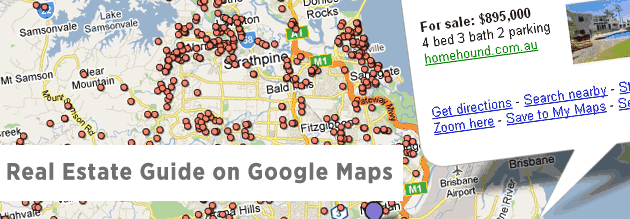
Advertising real estate on Google Maps
Are you in the Real Estate industry? Do you run a housing related portal? Than read on, because Google is now giving you more opportunities to advertise your properties on Google Maps and Google Web Search using Google Base.
Google Base is a place where you can easily submit all types of online and offline content, which we’ll make searchable on Google (if your content isn’t online yet, we’ll host it for you). You can describe any item you post with attributes, which will help people find it when they do related searches.
via http://base.google.com/support/bin/answer.py?hl=en&answer=59260
Google’s own explanation is pretty good, essentially Base is a portal where you can provide information and data on your leasing or for sale properties, Google can take this information, which may or may not be available on your website and display it in Google Maps and Google universal search. Note: Google base is not a new search product in itself, it simply acts as a information collection point.

PPC Audit Guest Post by Steve Loszewski
Popular pay per click programs include Google AdWords, Yahoo! Search Marketing (YSM), and Microsoft adCenter. If you have accounts in these programs, you’re probably interested in improving them to increase (or achieve) profitability. There are a number of ways to improve a pay per click account – what follows is a summary of some of the most common methods in identifying and improving elements of a campaign. Google AdWords is given heavy focus in this article, although many of the concepts can be applied to YSM and MSN as well.
(more…)

via flickr
Many internet entrepreneurs have an idea, they have a product, they have a website, but they typically still fail because they do not have the internet marketing savvy. They need a plan on how to get people to visit their website, how to ensure these people are looking for exactly what it is they are currently trying to sell, and to make sure once the visitor arrives at their website they are presented with a website which will provide them with the information, tools, overall navigation structure and calls to action to make sure they buy the product while they are visiting.
I know this sounds like a lot of work, but these are all so important to the success of your product or service online. Great products, great prices, great service do not sell online alone; great internet marketing offers you the opportunity to present your potential customers or clients with the great products, services and prices that you have to offer.
It is interesting how a traditional business person’s thought process varies from a search engine optimization or internet marketing professional. The entrepreneur thinks in a traditional sense of its order of events: unique or original idea, obtain products or services at good price, great presentation, good price points, and finally marketing.
SEO’s like me tend to approach business completely backwards from what is traditional. Give me any product, as long as the demand is good, and some decent profit margins, and our mind is racing ahead with marketing and getting traffic! (very targeted traffic).
So how does one get targeted traffic, well once you know what you product or service is and whom your potential customers are, you need to find out what search queries these people are currently performing that is going to present you with the highest opportunity to sell them your product or service. This is accomplished with what we call keyword research. Keyword research as defined by Wikipedia is “a practice used by search engine optimization professionals to find and research actual search terms people enter into the search engines when conducting a search.”
Targeting the right keywords is probably the single most important factor in the future success of your business. There are a multitude of keyword research tools available these days, with one of them being tied to Google Adwords which is called the Google Keyword Tools or SK Tool. I will focus on this tool for the time being and will list a bunch of others.
My experience with this tool has been all over the map. At times it has proven to be balls on accurate and other times it seems to have seriously flawed data both in the competitive nature of search terms and the traffic currently being seen within Google.
Once you log in to the tool you can fire when ready, everyone knows for the most part what their select few targeted keywords might be, so this is where you should start. Enter you top 5-10 keywords that you think would be good (do not forget to use both singular and plural). Google will suggest related terms. Google helps you gather your keyword list, which is not surprising as it is in Google’s best interest for websites to be prepared to optimize their websites for the appropriate keywords as this will make their job much easier.
Once Google has displayed a nice fat list of potential target keywords, be sure to select the drop box that says ‘broad by default’ and select ‘exact match’. Otherwise you are seeing merged results, which skew the search volumes heavily towards your potential trophy keyword; exact match supposedly will display exactly how many search queries for each keyword combination Google has actually received over the past month. Another thing I like about this tool is the ability to change the language to show results in particular countries searches.
So now that you’re looking at the list of words with exact match, you will see some columns that display how competitive each keyword is. For the most part this is completely useless as in most of the verticals we have worked in, all of the words anyone would want to rank for are displayed as very competitive, therefore having the little green bar nailed all the way to the right. The only way to use this info is when you see words which are not currently shown as competitive and have a reasonable amount of search traffic, you’ve found a fantastic potential target. (and if for some reason you do not like that keyword send me an email and tell me about it, as I will build a website and quickly figure out how to make money from that keyword J).
Once you feel comfortable with the results, you can continue down the road of building a list by adding the words like cheap, discount, sale, new, used, in conjunction with your selected keywords . And bust out your thesaurus; if you do not know what this is, Microsoft Word has one 🙂
You may also be well served depending on the products or services you offer to add state names and city names both as a prefix and postfix to your primary keywords. The sky’s the limit, you can add colors, sizes, calls to action like fast, limited, crazy etc. You really need to take your time to develop a large and long list of keywords. If your just getting onto the game, the likelihood of getting to page one any time soon for your trophy terms is quite low, so realize that this lower hanging fruit using these popular two and three word search query phrases are going to be your life blood for the next 12-18 months.
Rinse and Repeat… There is really no secret to this, simply repeat this process for your other main phrases and by targeting these low hanging fruit or longtail keywords if you want to get technical. You will see a steady increase in organic traffic, from there move onto web analytics to see how you can better convert this traffic into sales. As a general rule, longtail leads tend to convert a lot better than leads from competitive phrases.
After your keyword research we can get into laying the on site groundwork for a successful website, like getting a keyword rich domain name, aged preferably, possibly online for its entire life, and having a few very aged links, then cooking up a really tight website, with all the required on site meta info, fully optimized content, solid internal link structure and multiple forms of updating content. We will circle back to many of these additional onsite SEO tips at a later date.
Additional Resources for good keyword research tools are as follows (I have used all of the below to some level):
http://www.keyworddiscovery.com/
Share this post: http://bit.ly/1y3glC | Sphinn this post